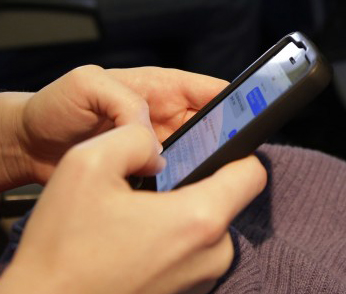When the topic of cellphone safety arises, common responses harken back to grade school – stopping just short of the fingers-over-ears intonation “I can’t HEAR you!”
Our addiction to these captivating devices is not the only reason we remain uninformed. The science is complex, with plenty of troubling findings but enough uncertainty to rationalize the mantra of “more research needed.”
Phone owners assume – wrongly – that their devices already adhere to strong safety guidelines, not realizing that the current regulatory landscape is a sham.
Hardest of all, cellphones are part of an elephant that dominates not just the room but the planet. In a few short decades, we’ve wired our world and most of us now live in a thicket of ElectroMagnetic Frequency or Radiation.
This non-ionizing “microwave” radiation comes not just from cellphones and cordless phones, but from laptops, tablets, hard drives, Wi-Fi, radio and cell antennae, baby monitors, so-called “smart” meters, and other hardware of modern life. All forms of EMR “have observable effects on biological systems,” writes Martin Blank, Ph.D., a biophysicist at Columbia University, in his book “Overpowered.”
In May 2015, a group of 190 leading scientists from around the world issued an appeal requesting that the United Nations and the World Health Organization develop “more protective guidelines” for wireless radiation (see emfscientist.org). These researchers, who collectively have published more than 2,000 peer-reviewed papers on EMF, have found evidence of reproductive and learning impairments as well as neurological, hormonal and cardiological disruptions.
What gets most press is the threat of increased tumors – several kinds of brain tumors and ones associated with the salivary glands. Studies and anecdotal evidence suggest that heavy cellphone use over a decade or more can increase risk of these cancers.
Microwave radiation is notoriously uneven and can produce hotspots of intense exposure. That is why microwave ovens have turntables. But as Devra Davis, notes, “we can’t rotate our brains while we are on the cellphone.”
Few health studies to date reflect today’s intensity of cellphone use or the varied exposures to wireless radiation. One cellular phone study that the World Health Organization’s International Agency for Research on Cancer relied on in labeling wireless radiation a “Class 2B Possible Carcinogen” considered “high exposure” 30 minutes a day over a period of more than 10 years. By today’s measures, where many users log up to 480 hours a month, that “high” seems absurdly low.
EMR impacts on young people have not been researched much, even though scientists have demonstrated that children’s brains can absorb twice as much radiation – because they have thinner skulls and bone marrow and higher fluid content. Many schools now have Wi-Fi routers that expose children to elevated EMR throughout the day.
With EMR – as with tobacco, pesticides and flame retardants – the strong hand of industry has skewed both science and policy. “They buy silence. They buy apathy. They buy politicians,” says Lt. Governor of California Gavin Newsom in the documentary “Mobilize.” He might have added, “They buy scientists,” as a vast number of the studies finding no health threats have been industry-funded.
There’s a revolving door between regulatory agencies and industry. Tom Wheeler, now chairman of the Federal Communications Commission (FCC), served for eight years as president and CEO of the cell industry trade group, the Cellular Telecommunications and Internet Association.
Lobbying efforts in Washington have won the industry regulatory carte blanche – such as a rider in the Telecommunications Act of 1996 (Section 704) that prohibits citizens and local governments from stopping placement of a cell tower “on the basis of the environmental effects of radio frequency emissions.” That decision rests only with the FCC. Now cell antennae are everywhere – atop churches, apartment buildings, nursing homes, and hospitals as well as on school grounds.
The FCC has not updated its maximum exposure guidelines for cellphones in two decades, despite requests from groups such as the American Academy of Pediatrics. The U.S. Centers for Disease Control issued a warning on its website in June 2014 urging “caution in cellphone use,” only to erase it – without explanation – two months later.
Typically, with a new technology that could pose serious health threats, government should operate under the Precautionary Principle – requiring proof of safety. That is not happening: it is caveat emptor – buyer (and user) beware.
The EMR elephant will not go away, but devices, buildings and communities could and should be better designed to minimize exposure. Until that happens, it’s only prudent to treat wireless devices with caution. We’re participating in a vast global experiment, and to date there’s been no informed consent.
Marina Schauffler, Ph.D., is a writer who runs Natural Choices (naturalchoices.com).
Send questions/comments to the editors.



Comments are no longer available on this story